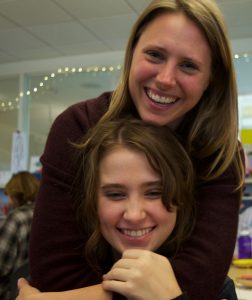Tracie Dunn, Rivers & Revolution
What is your favorite part of your job?
Relationships! My favorite part of teaching is connecting with students through art and creative hands-on making and learning. Everyday I laugh and hear laughter, and sometimes there are tears. I value education that encourages the whole person to show-up for the experience of learning. Relationships built in the classroom affirm that learning can be joyful and powerful when it is a shared and communal endeavor.
How would you summarize your teaching philosophy?
My instructional practices teaching art aim to encourage positive interpersonal experiences and substantial learning opportunities through the process of making art. I believe the art studio/classroom is a space in which students can begin to truly experience and appreciate freedom. Freedom of thought. Freedom to experiment with ways of seeing, doing, and being as learner and a person. Freedom to discover what works for them to be effective learners and people. And finally, freedom to envision the future they want to create for themselves. As always, “with freedom comes responsibility” – a balance that is hard to learn, maintain, and master.
Why did you become a teacher?
Becoming an art teacher evolved naturally out of my limitless exploration of visual arts and my desire to work with people. Before officially becoming a classroom teacher, I had already worked as an arts instructor in summer camps, after school programs, non-profit organizations, pre-college programs, special needs programs, and other arts experiences. Working with people of all ages and ability levels has deepened my connection to visual arts and my love for humanity.
Describe your teaching style.
Warm, honest and demanding. I respect students and other school faculty and personnel as complete and whole individuals. I seek to be open, honest and hardworking as a teacher…. And I hope that has a positive influence on the students and people I work alongside, that my investment in being my whole self and working hard becomes an invitation for others to reciprocate.
What is a piece of advice you have for students at CC?
Loosen your grip.

